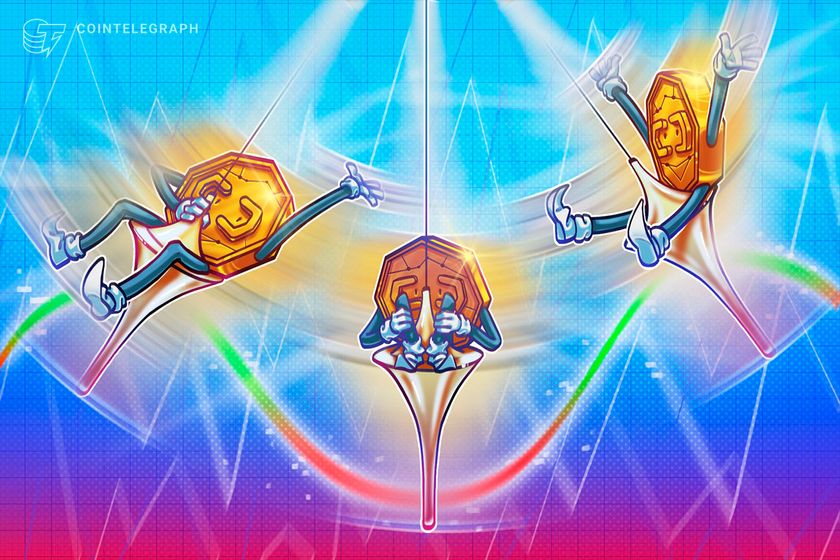
Independence From Web 2.0 – Three Reasons Why Your Business Should Switch to Web 3.0
HodlX Guest Post Submit Your Post
Web 3.0, the third iteration of the internet, came into the technology limelight with a unique offering decentralization and user control.
For decades, the internet has assumed a typical hierarchy, with centralized infrastructure providers at the top of the food chain, and users at the lowest ladder rung.
In itself, this structure wasn’t all that bad. Providers took all the risk of developing and maintaining the technology while users got to enjoy the benefit in many cases for free.
This version, popularly known as Web 2.0, was a significant upgrade from the existing ‘read-only’ internet and played a vital role in shaping modern-day business.
Facebook, YouTube, Instagram and other social networks emerged and users could interact and share photos and videos with their friends, co-workers and family members.
Web 2.0 also became one of the enabling technologies responsible for the proliferation of cloud computing.
Cloud computing allowed businesses to access on-demand self-service on a ‘pay-as-you-go’ model that reduced overhead costs and improved flexibility in scaling.
However, as Web 2.0 became increasingly successful, new patterns began to evolve. The internet became increasingly centralized, consolidating digital power in the hands of a few large companies.
Pages were censored, cyber-security attacks skyrocketed and large corporations began to sell user data to advertisers for monetary gains.
Providers could arbitrarily kick websites deemed not to conform with their policies off the internet or restrict them from appearing in web results.
In many cases, tech giants became judges, juries and executioners.
Welcome to Web 3.0
Web 3.0 represents a new internet age, built on the core values of decentralization, privacy, security and personalized experiences.
To this end, it integrates technologies like blockchain and cryptocurrency to create a decentralized network that is not controlled by the hegemony of a few tech giants but rather ‘by the people and for the people.’
Since Web 3.0 evolved out of the need to make the internet free again, decentralized providers offer users more flexibility in their business choices, ensuring a level playing field for all participants.
Whether you are a business owner, a creator or a developer looking to build scalable products or an average internet user here are the top three reasons why you should consider switching over to Web 3.0.
More user control
One of the primary advantages Web 3.0 offers is restoring users’ data rights. On Web 2.0 platforms, while users can freely share content, they do not retain any rights over data shared on these platforms.
In a classic example of “If you’re not paying for the product, you are the product,” many Web 2.0 social media platforms actively encourage users to share data like personal information, preferences, birthdays and more in exchange for free use of the platform.
This information and other data like buying patterns and website visits are tracked, recorded and then sold to advertising companies, which use them to create targeted ads.
In contrast, on Web 3.0 platforms, the user remains the rightful owner of any data and information shared.
Users also have control over what portion of data they want to share with advertising companies and can even directly profit from the monetization process.
The inherent features of the blockchain also allow users to create decentralized identities that are not dependent on any centralized authorities an approach that provides greater flexibility and control.
In addition, data and transactions can be securely recorded on the blockchain.
At the same time, developers can take advantage of technologies such as IPFS (interplanetary file system), where data is distributed across a network of servers or ‘nodes,’ with each node only retaining a portion.
This way, there is no single point of failure, making it significantly more challenging for malicious actors to compromise the system’s integrity.
Web 3.0’s decentralized infrastructure also eliminates the autonomy of conventional Web 2.0 providers, effectively circumventing issues like vendor lock-in or censorship.
An incentive-based system
Web 3.0 advocates a system where all participants, rather than a few centralized entities, win.
For example, tokenizing digital content through Web 3.0 technologies offers a very effective way to bring decentralization to the creative industry and allow creators to benefit directly from the work while eliminating third parties.
However, a bigger context would be DePIN (decentralized physical infrastructure networks).
DePIN projects build on the Web 3.0 ideology and incentivize participants with digital tokens / cryptocurrency to set up real-world physical infrastructure networks.
These include decentralized compute marketplaces, wireless networks, decentralized storage and more.
DePIN projects offer extensive applications across all sectors, including IoT and AI (artificial intelligence), and continue to gather growing momentum.
They offer a win-win situation that directly rewards participants in the ecosystem for contributing their physical infrastructure to the network while addressing key challenges in modern technology.
Security and payment solutions
Web 3.0 offers a security architecture backed up by the integrity of the blockchain a distributed system with multiple fail-safes. For business owners, this promises a double-fold advantage.
Firstly, the Web 3.0 decentralized system makes applications very resilient to failures.
This is due to a redundancy system that ensures that even when one node goes down, several other nodes will automatically compensate and keep the application running.
Web 3.0 providers offer a much more affordable price point for hosting infrastructure, providing a cost-effective alternative for running applications in the cloud without compromising on speed, performance or scalability.
By adopting blockchain and cryptocurrency solutions, Web 3.0 presents a decentralized and trustless system for accessing financial products.
Instead of walking into a bank, users can carry out financial transactions using a smartphone from the comfort of their homes.
Technological innovation is not new in the financial sector. Decentralized finance on Web 3.0 simply builds on these precedents to create new opportunities.
Rounding up
Web 3.0 encapsulates a viable solution to many of the challenges the tech industry faces today.
Businesses can now maximize profitability and performance while retaining full control over privacy.
It’s time to emerge from the centralized shackles of ‘big tech’ and explore the independence Web 3.0 offers.
Daniel Keller is the CEO of InFlux Technologies and has more than 25 years of IT experience in technology, healthcare and nonprofit/charity works. He successfully manages infrastructure, bridges operational gaps and deploys technological projects.
Follow Us on Twitter Facebook Telegram

Disclaimer: Opinions expressed at The Daily Hodl are not investment advice. Investors should do their due diligence before making any high-risk investments in Bitcoin, cryptocurrency or digital assets. Please be advised that your transfers and trades are at your own risk, and any loses you may incur are your responsibility. The Daily Hodl does not recommend the buying or selling of any cryptocurrencies or digital assets, nor is The Daily Hodl an investment advisor. Please note that The Daily Hodl participates in affiliate marketing.
The post Independence From Web 2.0 – Three Reasons Why Your Business Should Switch to Web 3.0 appeared first on The Daily Hodl.
Go to Source
Author: Daniel Keller









